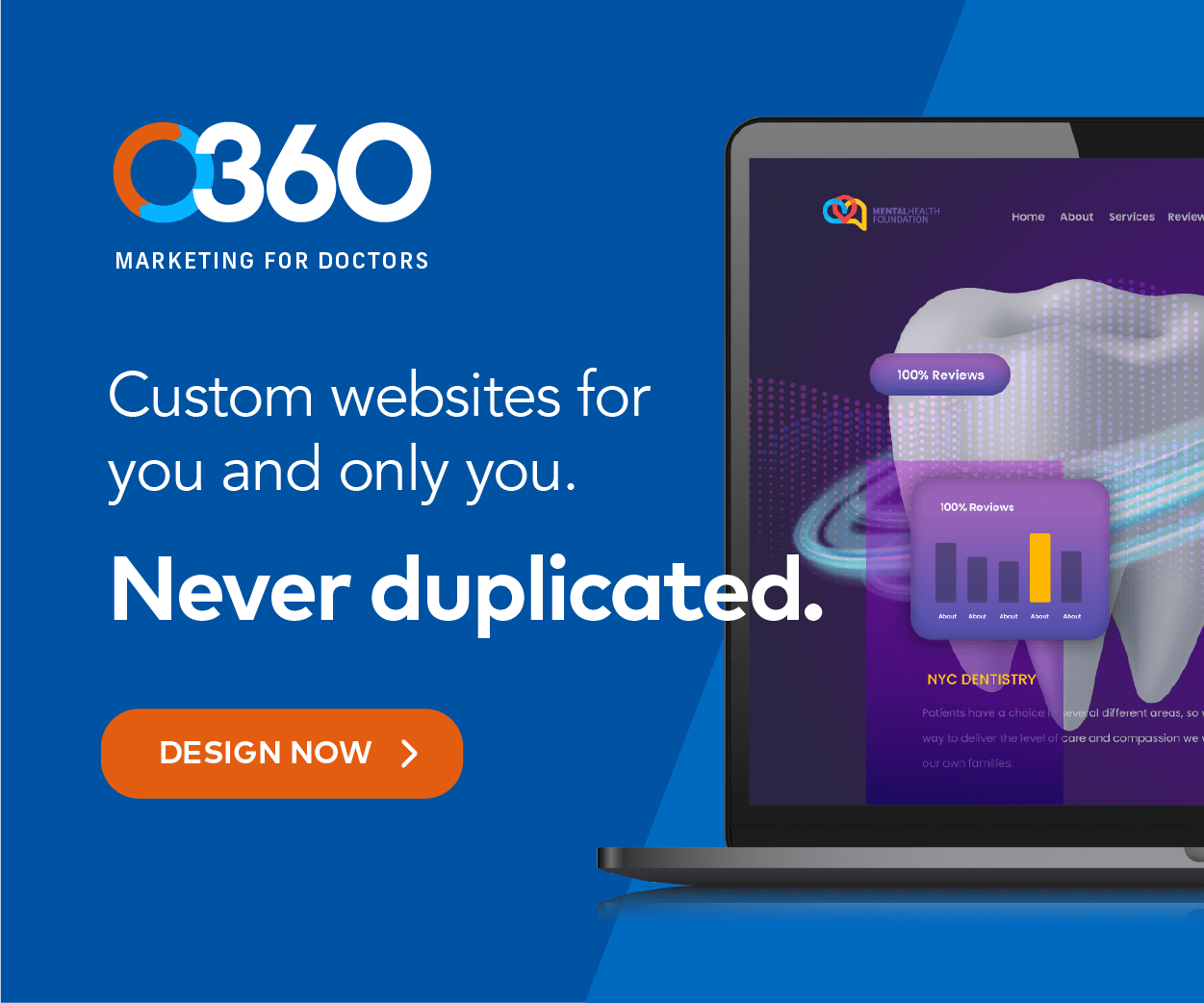AI chatbots have become a defining tool for patient interaction in the 21st century. As a software application that can be used for any use, AI has the potential to help even small practices redefine and streamline patient interaction and communication in various ways. This technology has provided a unique opportunity for healthcare sites to make their resources more accessible and engaging. But while the advent of AI is new and bright, embracing this new technology can help improve and enhance care, and if you’re looking to learn more about how to use chatbots for your website, then here’s an in-depth guide for how to refine and use these AI-powered tools to your advantage.
How AI and Chatbots Impacted Patient Interaction In Healthcare
AI-driven chatbots are powered by sophisticated algorithms and natural language processing capabilities, and thus, through text generation, models can interact with patients. In its simplest definition, AI chatbots are designed to mimic human interaction, processing information through triggered keywords to respond. These models can provide information, answer inquiries, and even assist with medical advice within its parameters. Text-generation models built on open-source medical data have been making waves in the healthcare industry, allowing even small, private practices to utilize its authoritative capabilities to help their patients receive care.
But why would practices use AI chatbots instead of people for patient interaction? AI chatbots are about more than replacing human interaction; they are about streamlining processes deemed unnecessary and cluttering to practices wishing to enhance the user experience. For website development, AI chatbots can keep patients connected with their ongoing healthcare, which includes scheduling appointments, requesting information about services, and making other inquiries.

The Benefits of Implementing AI Chatbots In Your Website
24/7 Service and Support
A chatbot can help you resolve simple patient issues more easily and leave your receptionists open to urgent calls and more complicated concerns. These chatbots can provide 24/7 service at a relatively low cost, helping offset the upfront costs and handle patient interactions by automating the experience, especially for repeated questions that don’t require human intervention to answer.
Cost-Effective Solution
AI chatbots have helped the healthcare industry save millions of dollars through their ability to automate processes and take over mundane tasks such as appointment scheduling for front desk staff members. They also reduce inefficiencies with no-show appointments and appointment bookings for one person. These chatbots have also helped reinforce scheduling and answer questions for patients who need life-saving screenings such as colonoscopies and mammograms.
Offers Anonymity and Reliability
Many patients desire anonymity regarding their medical information and questions about their healthcare. When used for patient interaction, AI chatbots provide a nonjudgmental space where patients seeking assistance can find the medical information they need without sharing their identity. These chatbots also allow you to assist patients at any time of the day, including after hours, to provide better patient interaction.
The Best Ways To Use AI Chatbots
Chatbots can be operated in several ways to improve patient experience and how they receive your care.
- Appointment Scheduling: Chatbots can help patients book appointments. The chatbot can access provider calendars, provide available times to patients, and then automate scheduling appointments.
- Symptom Assessment: A chatbot built on medical data can ask patients about symptoms and make recommendations based on their responses.
- Medication Reminders: Some chatbots can send patients reminders about their medications, including refills or reminders to take their prescriptions. These chatbots can also answer questions about their medication, including Identifying side effects, providing appropriate dosages, and explaining how it might interact with other medications.
- Health Education: When you’re unavailable, patient interaction with your healthcare chatbot can answer questions about health conditions, treatment options, and healthy lifestyle choices and offer other sources of information to help your patients make informed decisions about their healthcare.

How AI Chatbots Can Be Integrated Into Telemedicine
AI chatbots can be deployed in many different ways but for practices looking to improve the automation and efficiency of their business model, chatbots powered by AI can be especially useful tools. Telemedicine and AI chatbots complement each other, as they can offer valuable support to make healthcare services more accessible to those in remote or underserved areas.
The Challenges and Problems with AI Chatbots
While these programs can assist with many mundane problems practices face, AI chatbots face many challenges, especially as the technology has only been developed within the last few years. Despite their many benefits, these chatbots pose some notable problems when being integrated into a new system:
- AI Hallucinations: AI models tend to be prone to AI hallucinations, also known as confabulation. These models are designed to generate coherent text, but the model cannot analyze the text for factual information, often creating contradictions and irrelevant information to the input prompt. In the case of AI chatbots for healthcare, if a patient asks a question and the chatbot answers incorrectly, it can harm the patient and impact the practice’s reputation. The only way to reduce the likelihood of hallucinations is to use models and provide a larger dataset.
- Simple Inquiries: Most chatbots can only handle simple inquiries. While these chatbots can provide conversational, human-like responses, answering complex medical inquiries and other tedious questions, tend to pose issues, increasing the risk of hallucinations and providing incorrect information.
- Privacy Concerns: Because AI models run on datasets, chatbots built on healthcare data tend to contain sensitive patient information, especially if your chatbot isn’t compliant with local and government regulations such as HIPAA. Some patients may see an AI chatbot as a way to gather sensitive patient information and may become wary of it overall.
Most of all, AI chatbots lack the nuances of patient interaction. They can only provide superficial answers when empathy and understanding are needed. Even chatbots designed for healthcare inquiries about complex topics and treatments need more subtle and nuanced understanding than speaking with a healthcare provider can offer. To better address these challenges, it’s important to perform regular updates and rigorous testing to ensure that the models are updated to the latest data and that their responses are filtered and balanced to ensure the best possible experience for the patient.
Implementing Chatbots: A Step-By-Step Guide
When you choose to integrate a chatbot into your website, it can significantly improve your patient interaction and streamline many administrative tasks. If you’re looking to integrate a chatbot into your website, here’s a small step-by-step guide on how to do just that;
Step 1: Define Your Objectives
Identify Needs: Determine the primary purposes of your chatbot, such as appointment scheduling, patient queries, or health advice.
Set Goals: Outline what you aim to achieve with the chatbot, e.g., reducing wait times, improving patient satisfaction, or automating routine tasks.
Step 2: Choose The Right Platform
Research Platforms: Explore chatbot development platforms that offer healthcare-specific features and compliance with health regulations.
Select Technology: Decide whether to use rule-based or AI-driven chatbots based on your objectives. AI chatbots are more sophisticated but require more data and resources.
Step 3: Ensure Compliance and Privacy
HIPAA Compliance: Ensure the chatbot platform complies with the Health Insurance Portability and Accountability Act (HIPAA) and other regulations to protect patient data.
Data Security: Incorporate security measures to safeguard patient information.
Step 4: Develop the Chatbot
Design Conversations: Map out the chatbot’s conversation flows, including questions, responses, and actions. It should cover a wide range of patient inquiries and services.
Personalization: Incorporating personalization capabilities to tailor interactions based on patient data, such as medical history and preferences, helps improve patient interaction and their experience on your site.
Step 5: Integrate It With Your System
EHR Integration: Connect the chatbot with Electronic Health Record (EHR) systems to gain access to patient information and provide personalized assistance.
Appointment Systems: Ensure seamless integration with scheduling systems for efficient appointment bookings and reminders.
Step 6: Train and Deploy Your Chatbot
Input Medical Knowledge: Feed the chatbot a comprehensive dataset, including FAQs, medical guidelines, and policies, to ensure accurate and helpful responses.
Continuous Learning: Implement machine learning algorithms for AI chatbots to learn from patient interaction and improve over time.
Pilot Testing: Conduct thorough testing with a small group to gather feedback and identify areas needing improvement.
Step 7: Monitor and Update Your Chatbot
Performance Monitoring: Regularly review chatbot interactions to assess performance and patient satisfaction.
Updates and Maintenance: Continuously update the chatbot’s knowledge base and refine conversation flows based on new medical information and user feedback.
Finally, promote the chatbot to your patients through your website, social media, and newsletters to highlight its benefits and how to use it. Train your staff on how the chatbot works and how it can complement their roles, and ensure that it’s seamlessly integrated into your healthcare delivery model.
Call Optimized360 For Your Medical Marketing Strategy
AI and chatbots are revolutionizing healthcare, providing substantial benefits to providers and patients. Suppose you’re looking to start a strategic approach to your website with AI chatbots. In that case, seeking a marketing team that understands these rising technologies and can help you explore AI and ChatBot opportunities with Optimized360 is important. Through our team of marketing experts, you can take the first step towards changing how patients interact with your website for the better.













